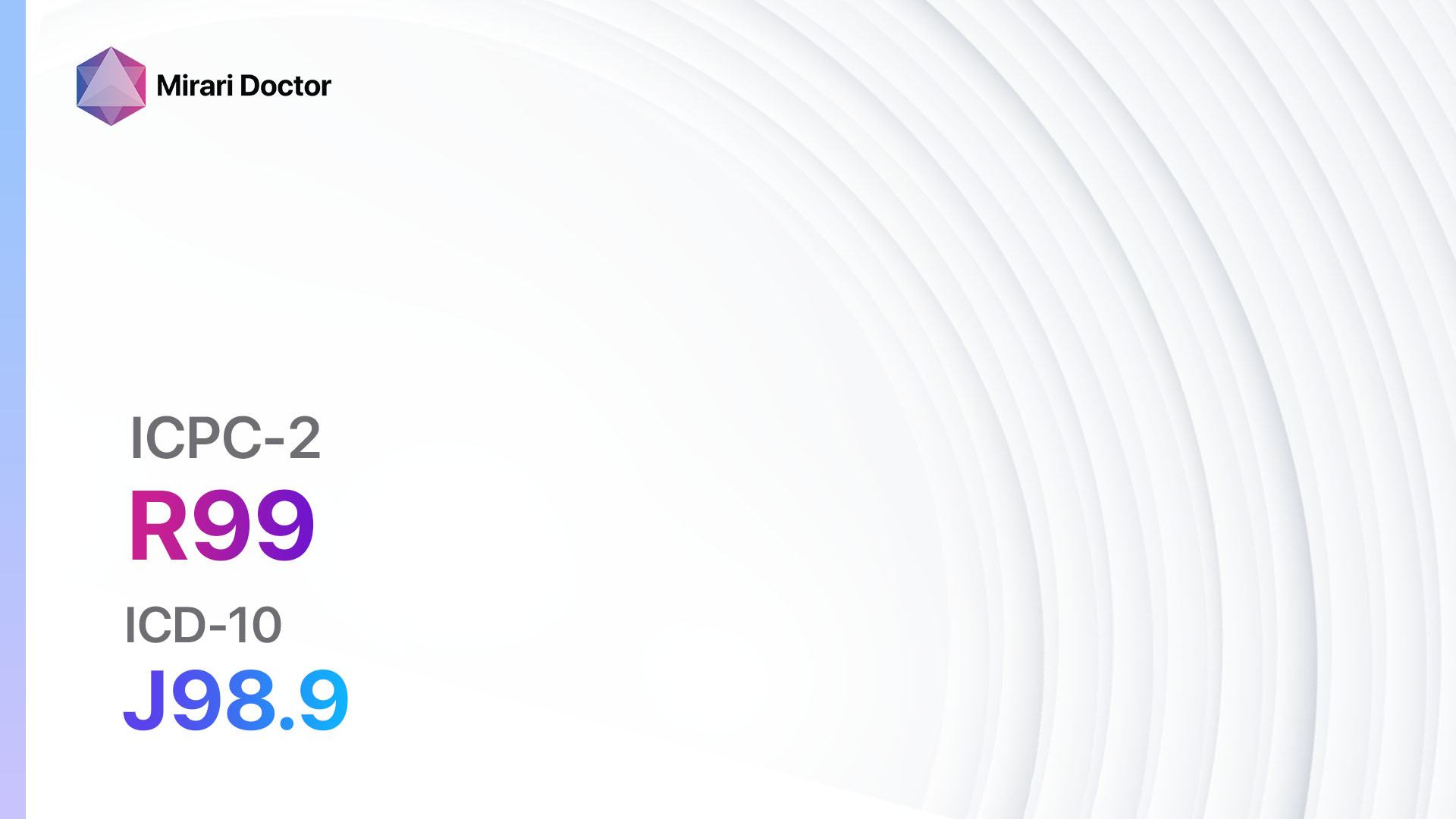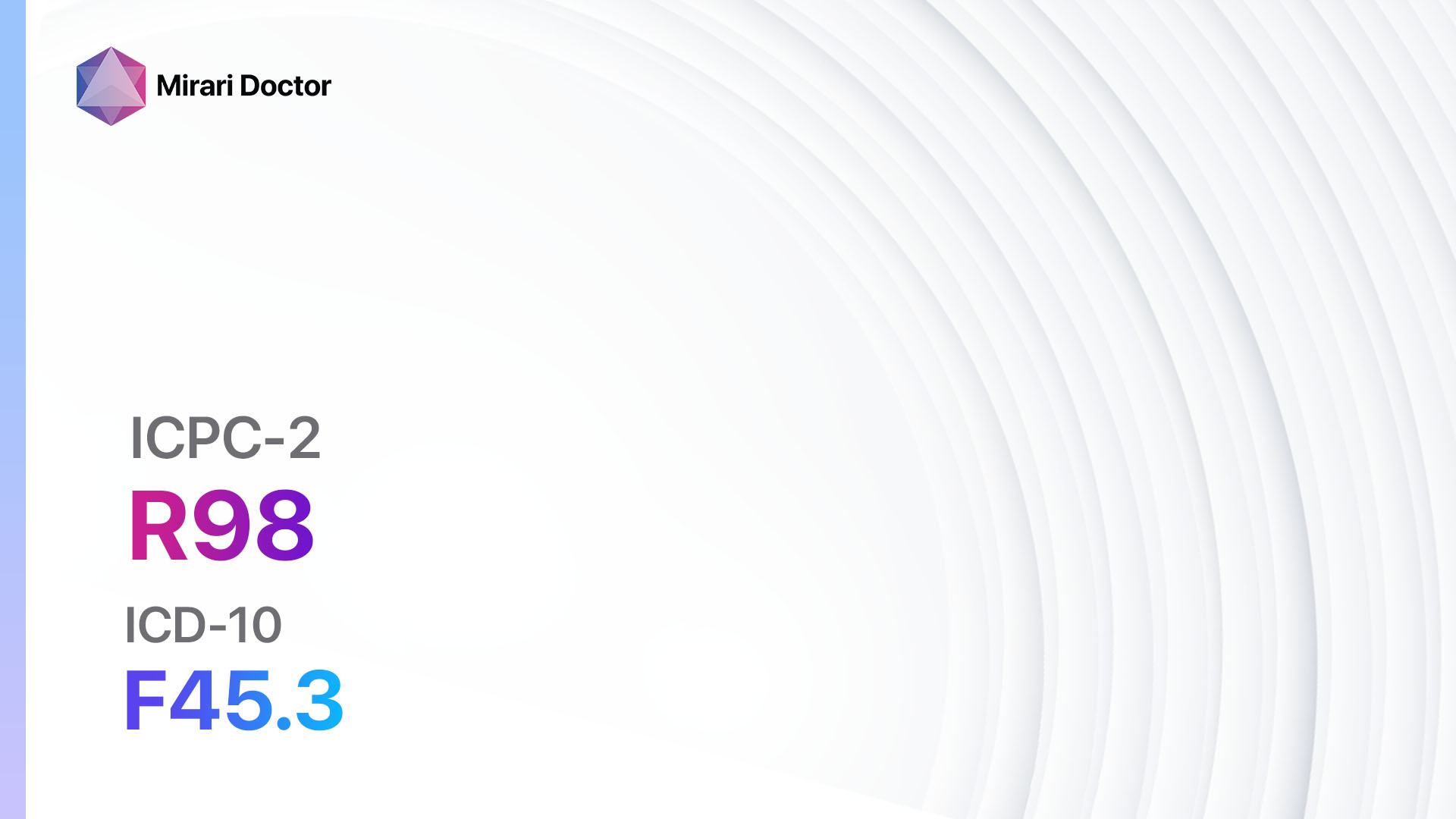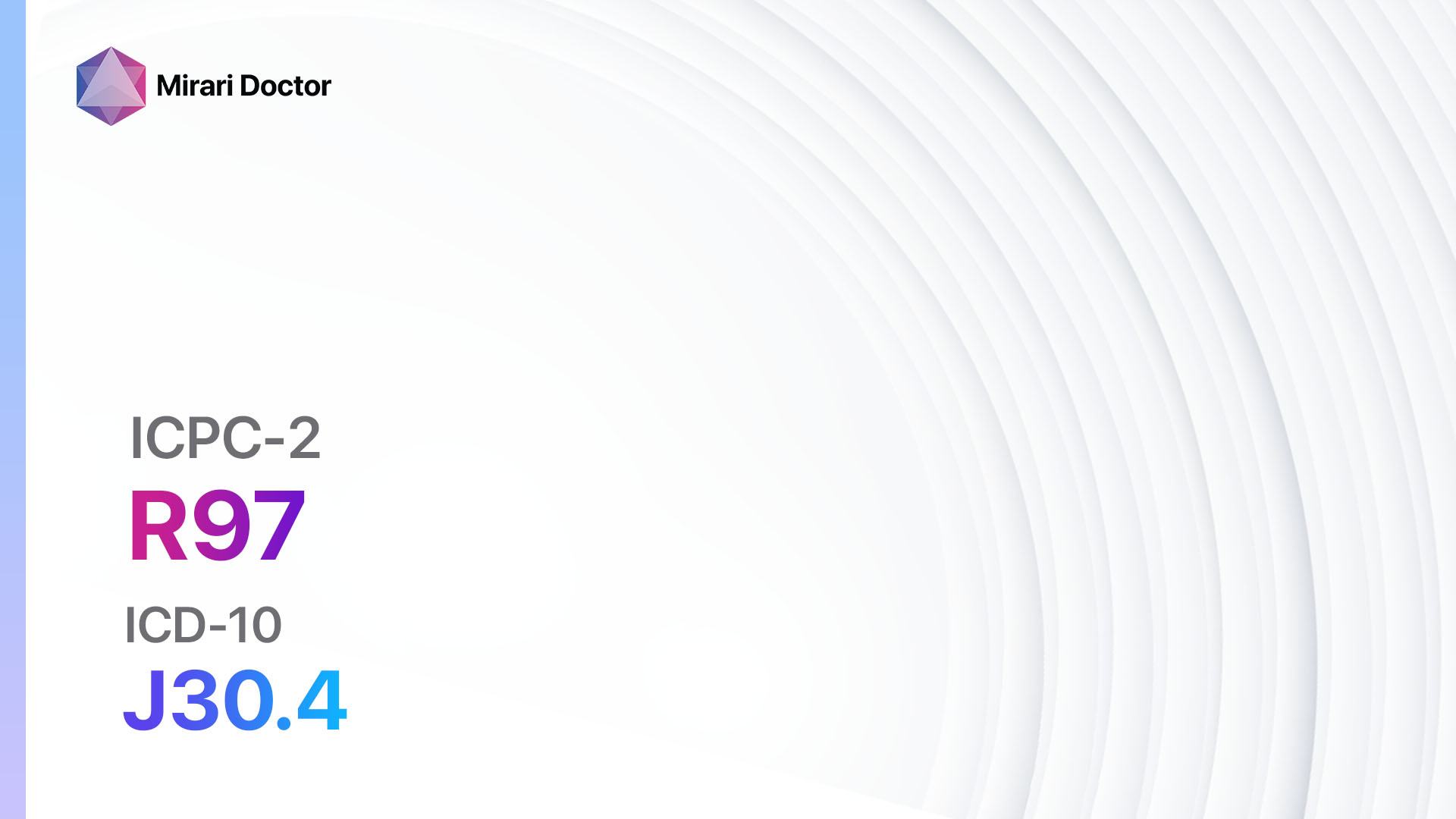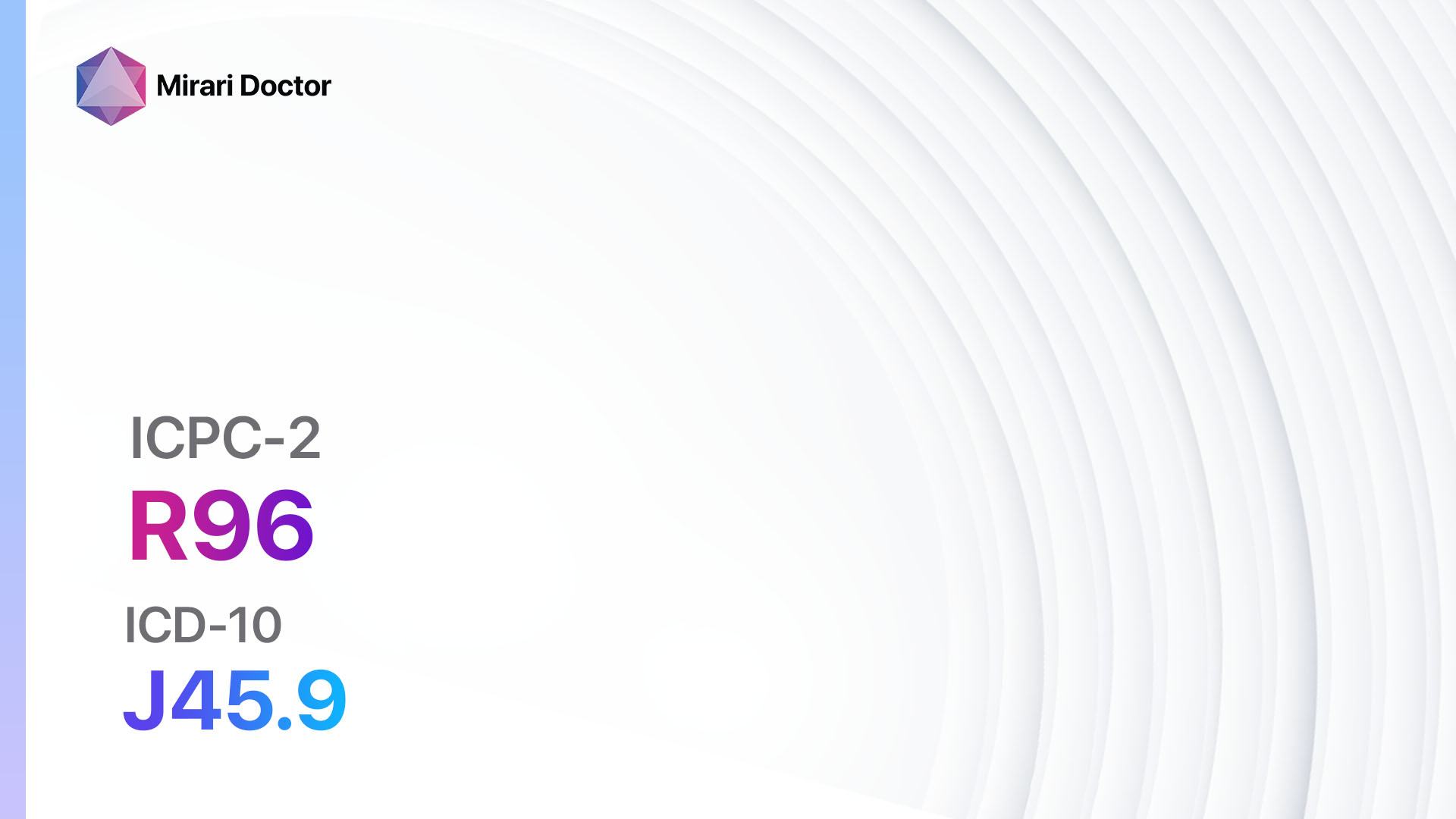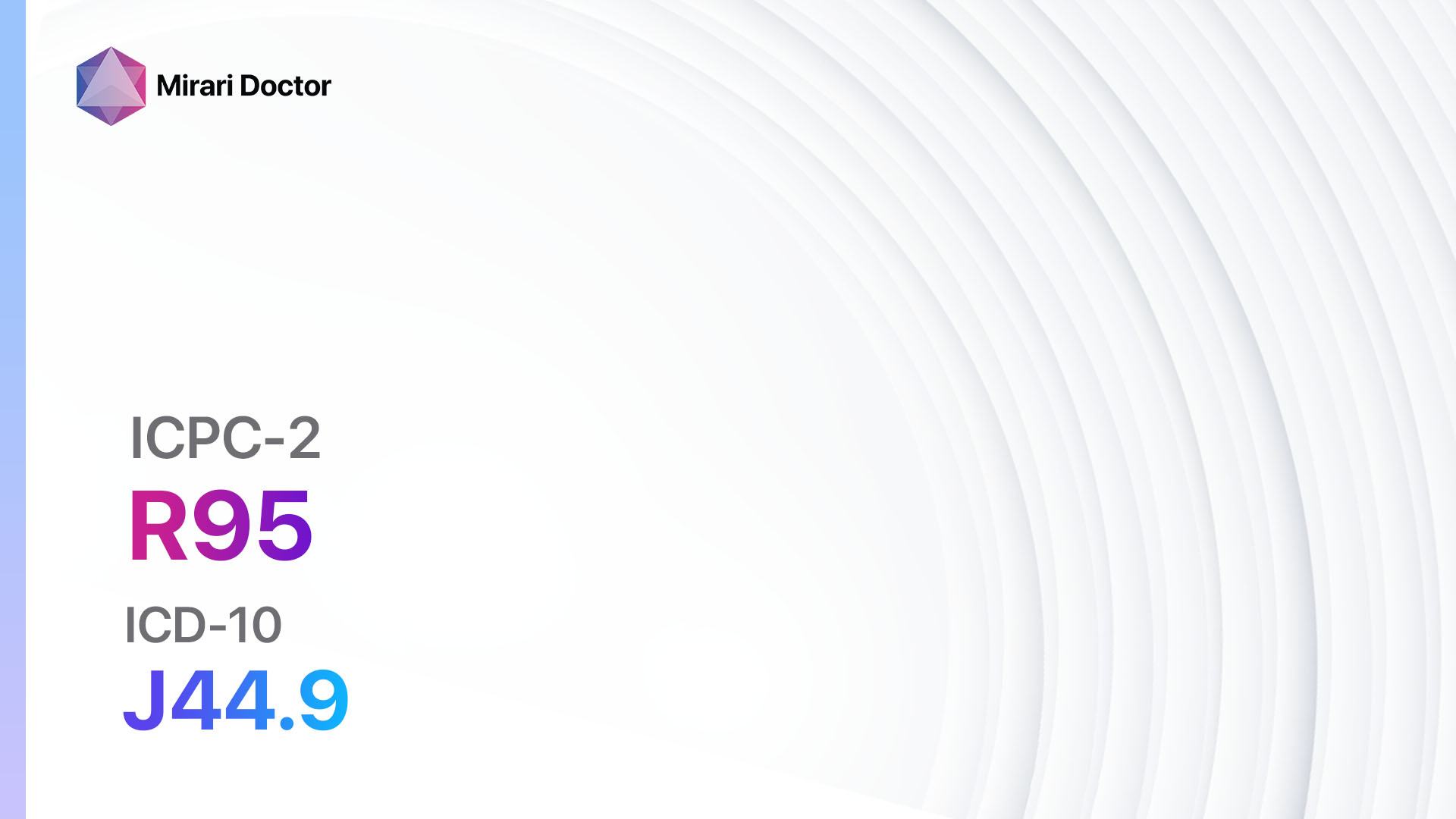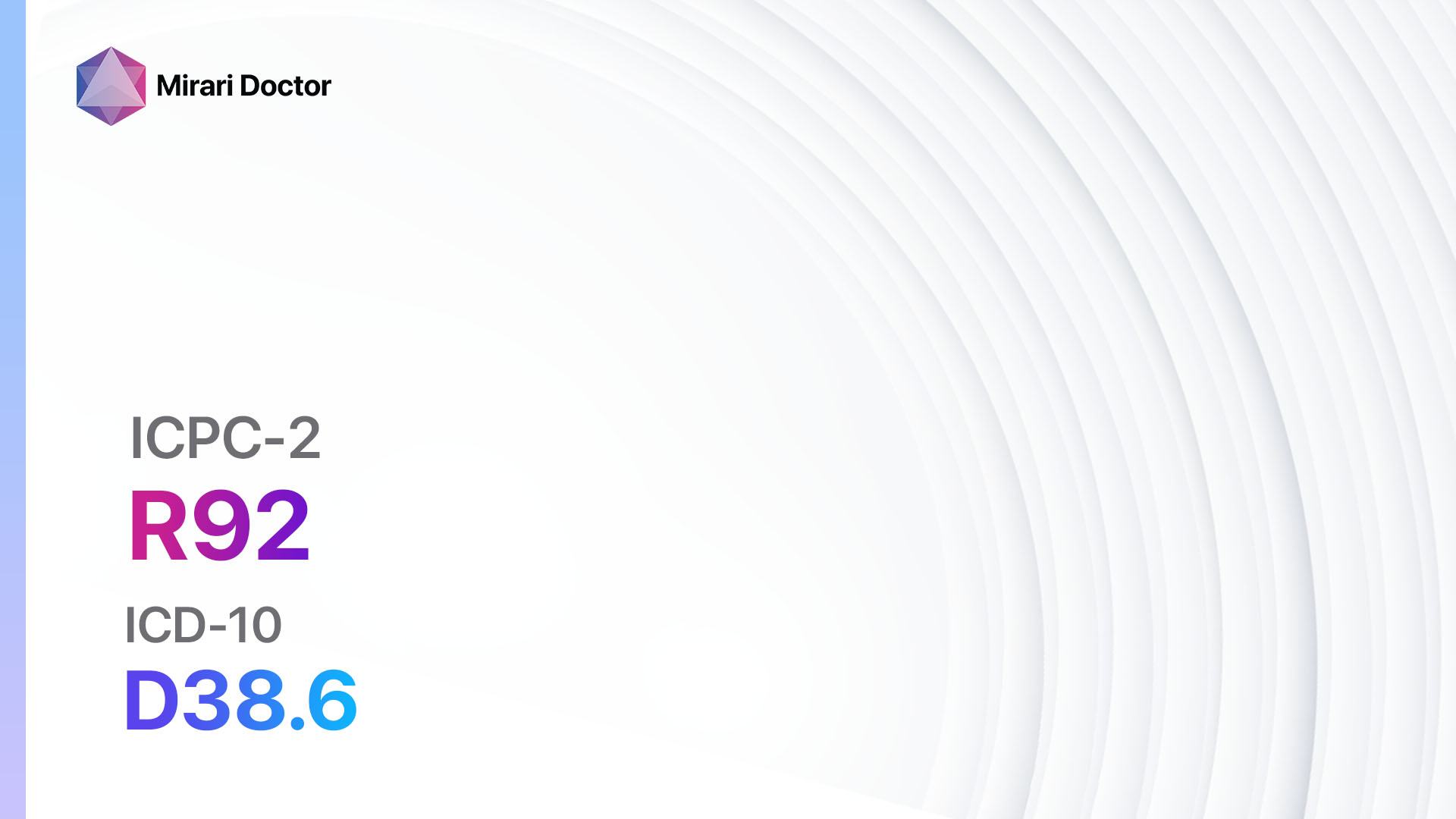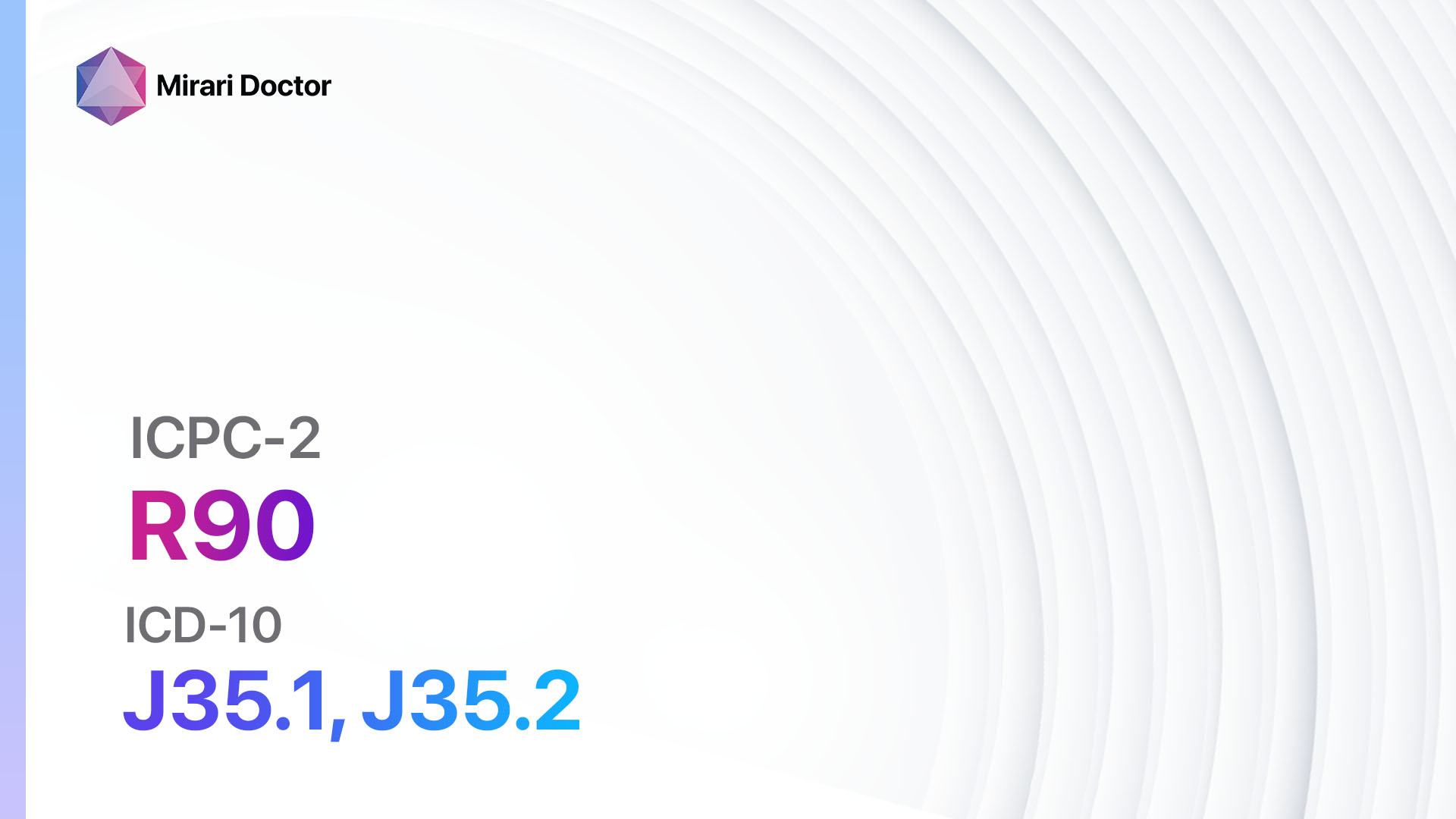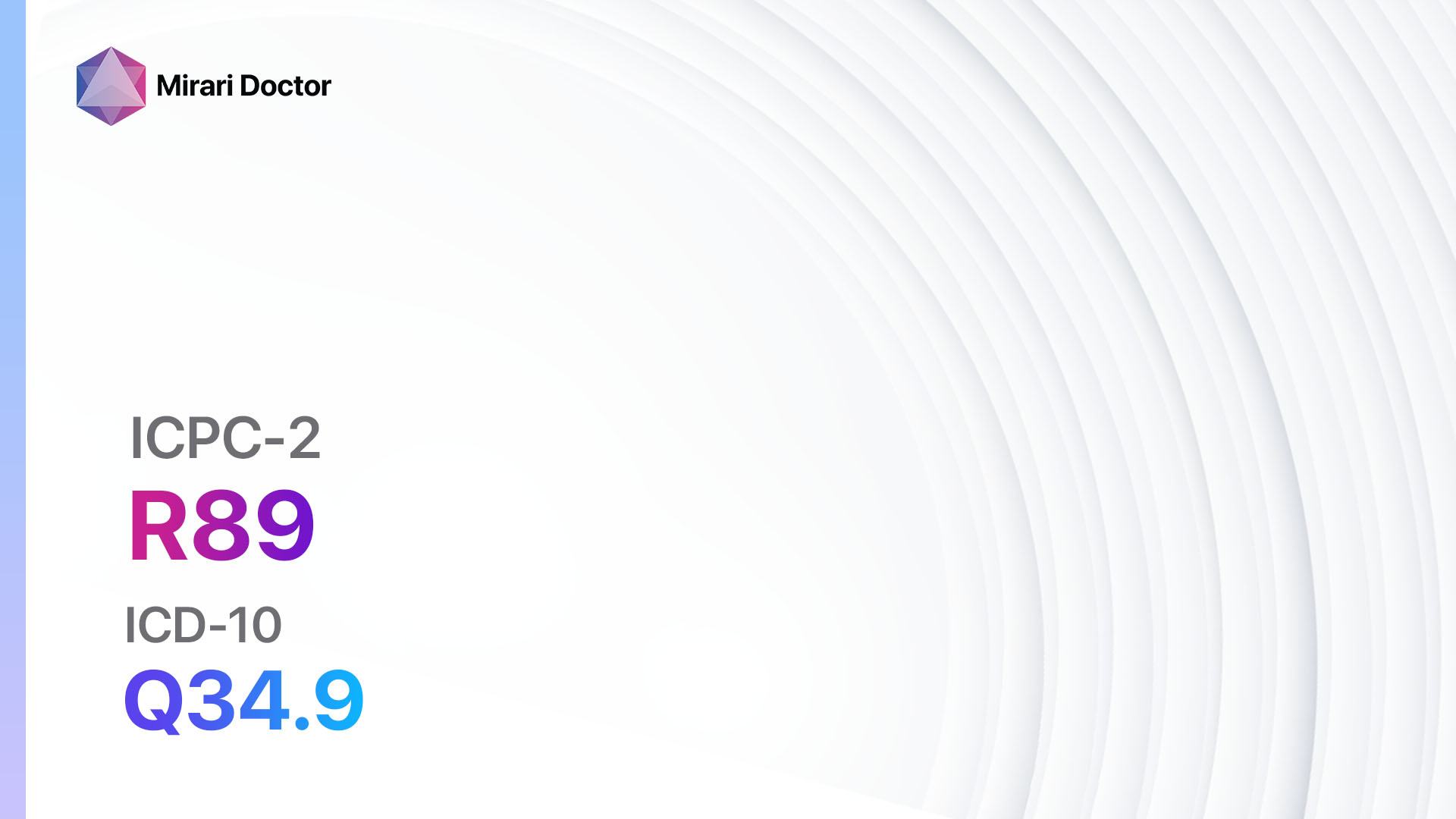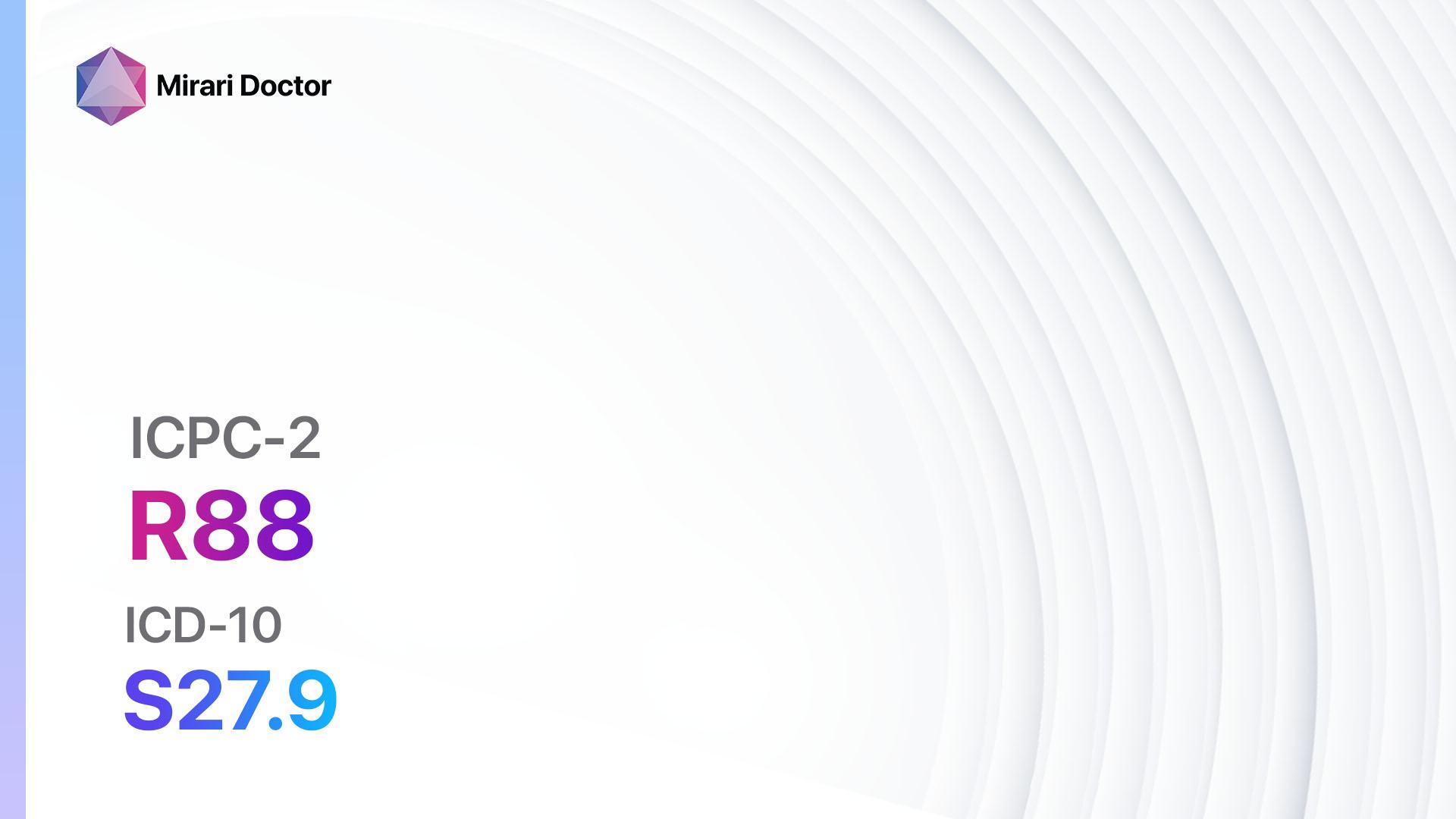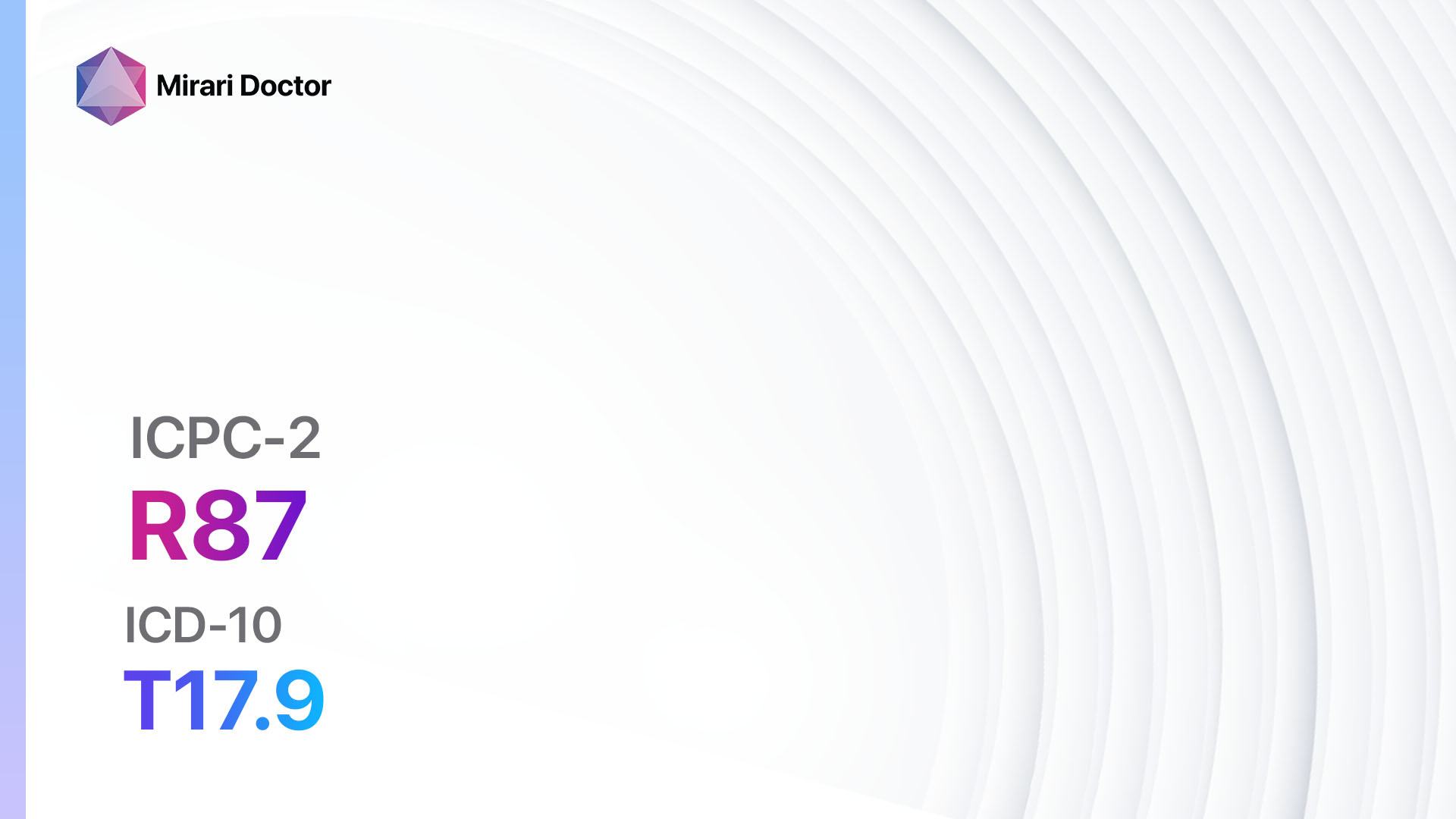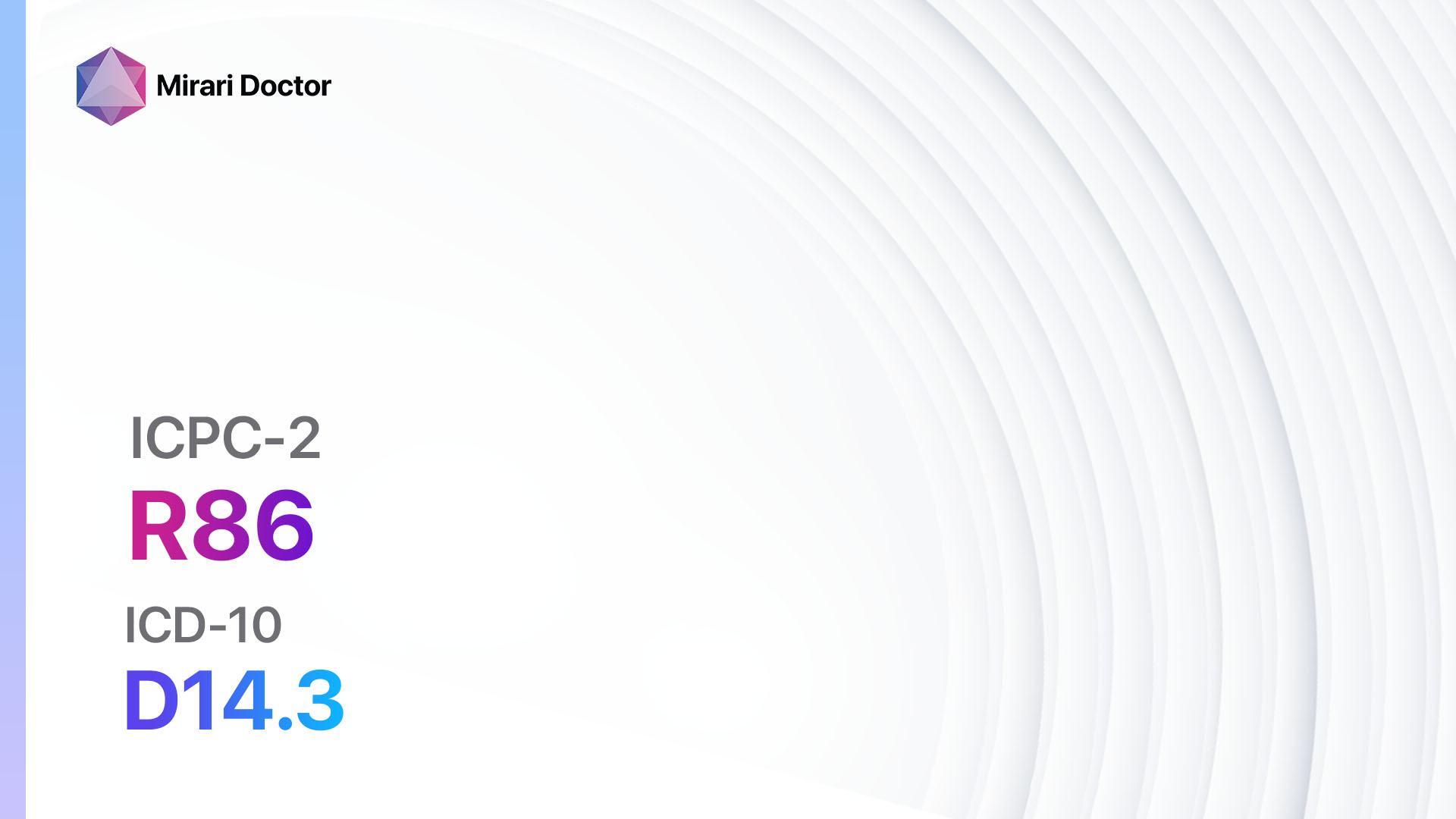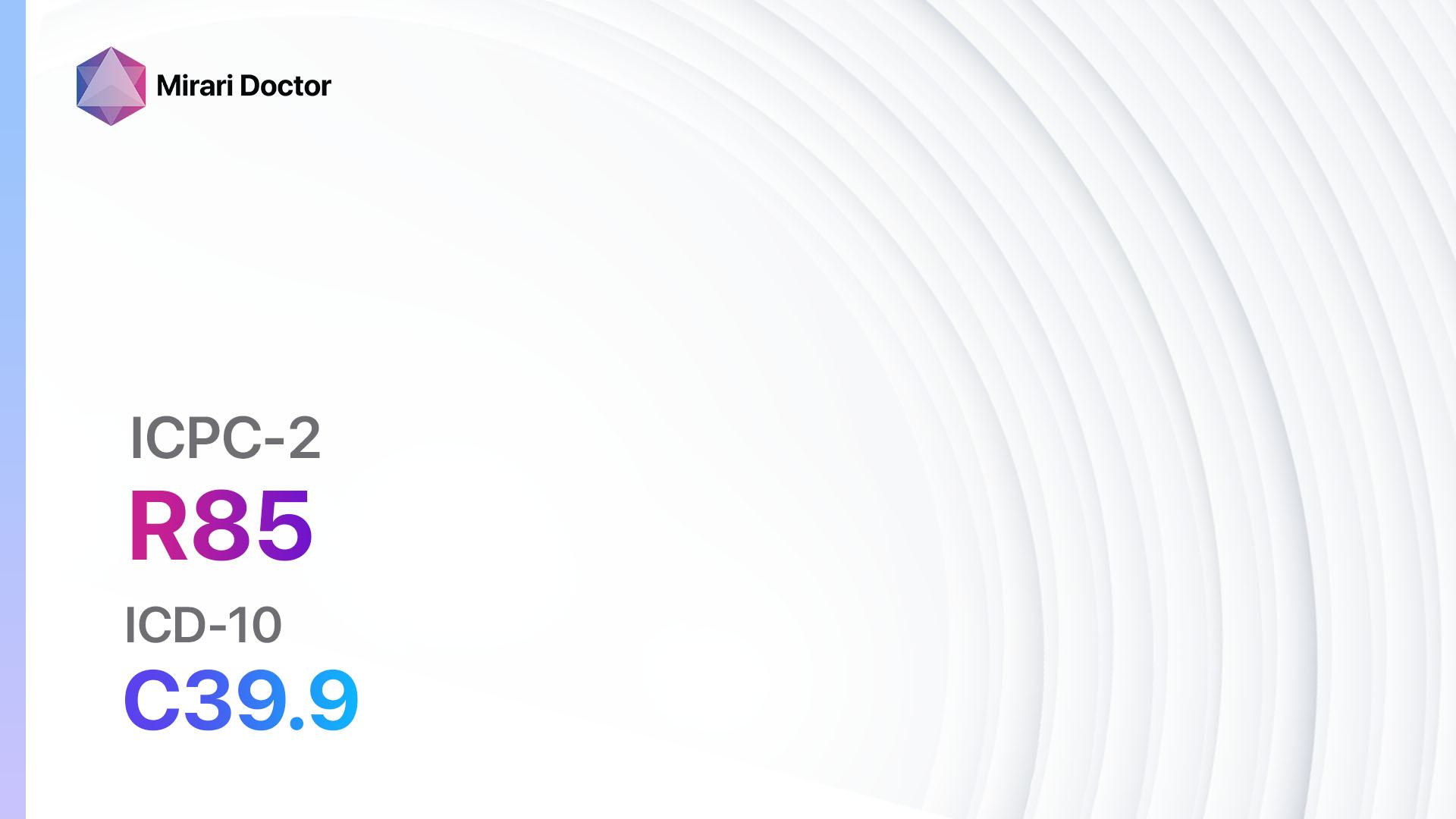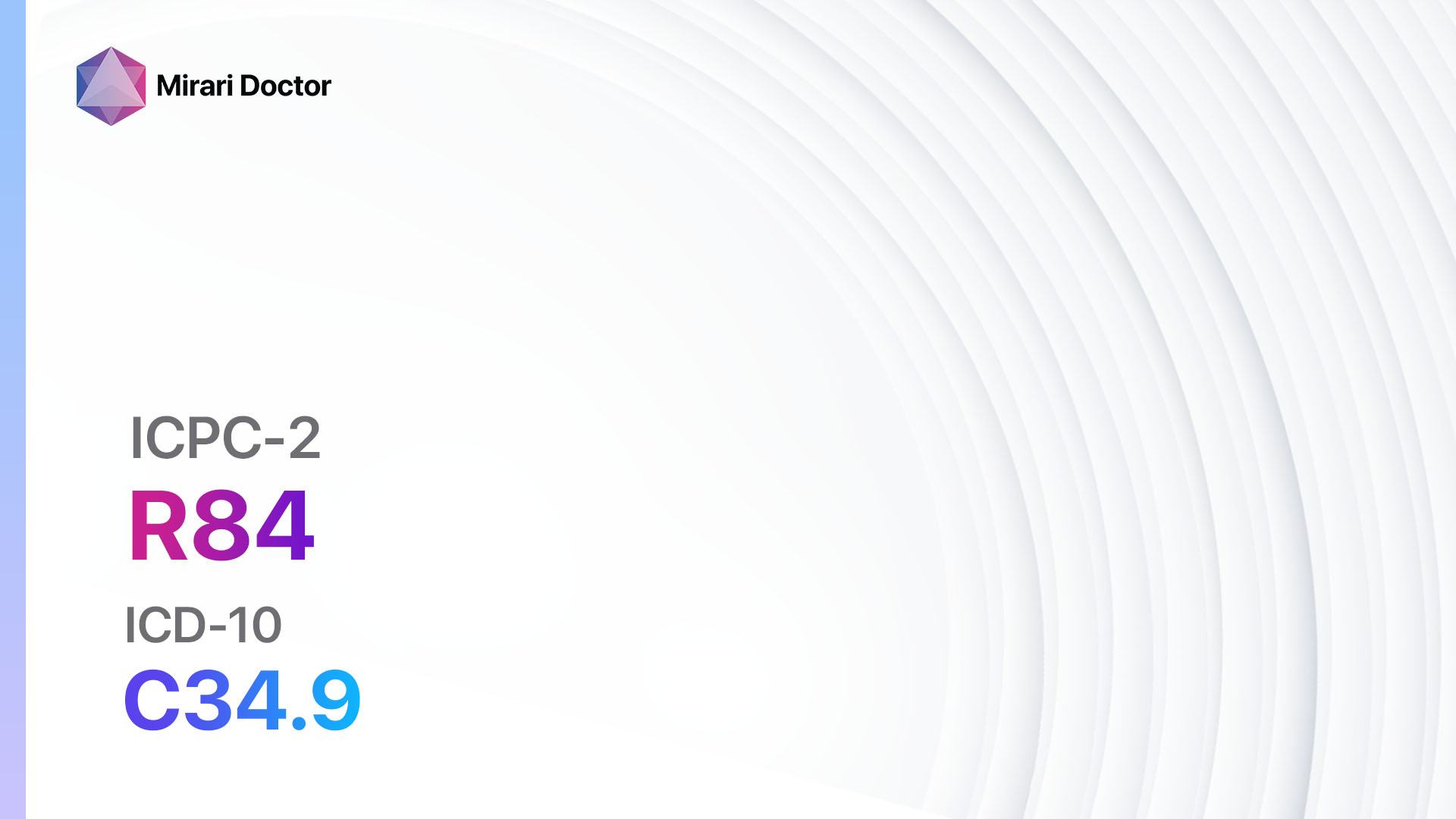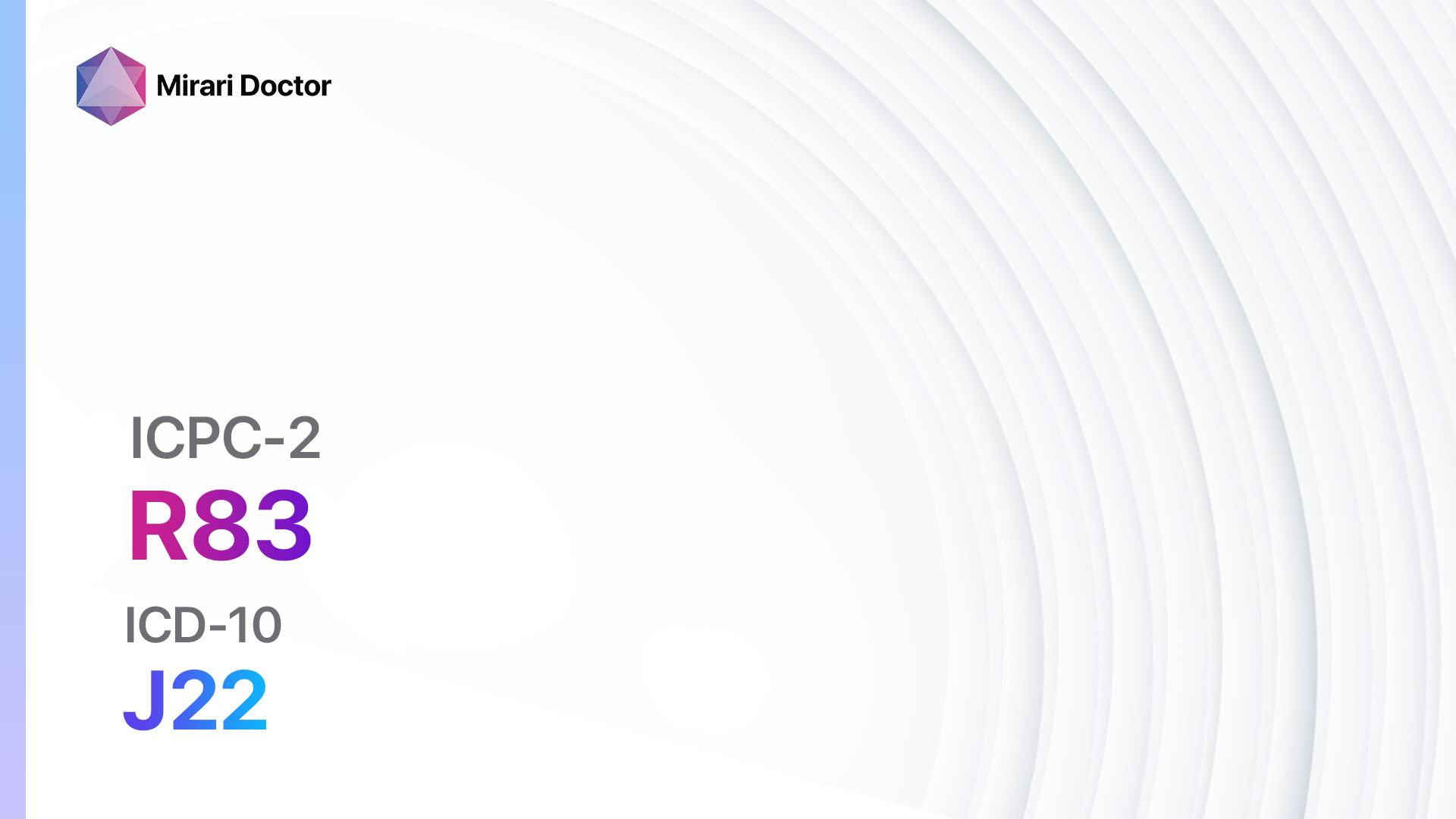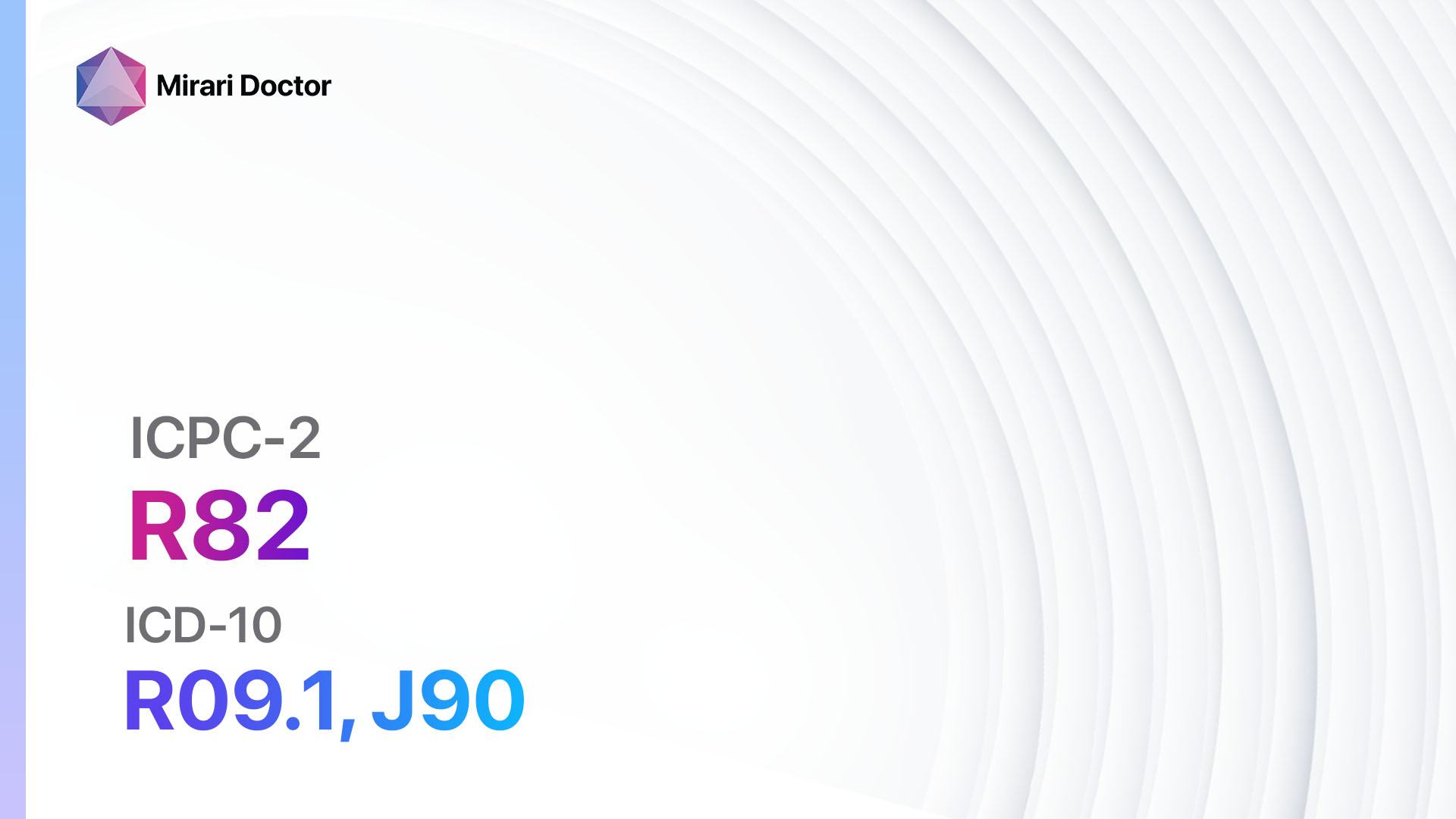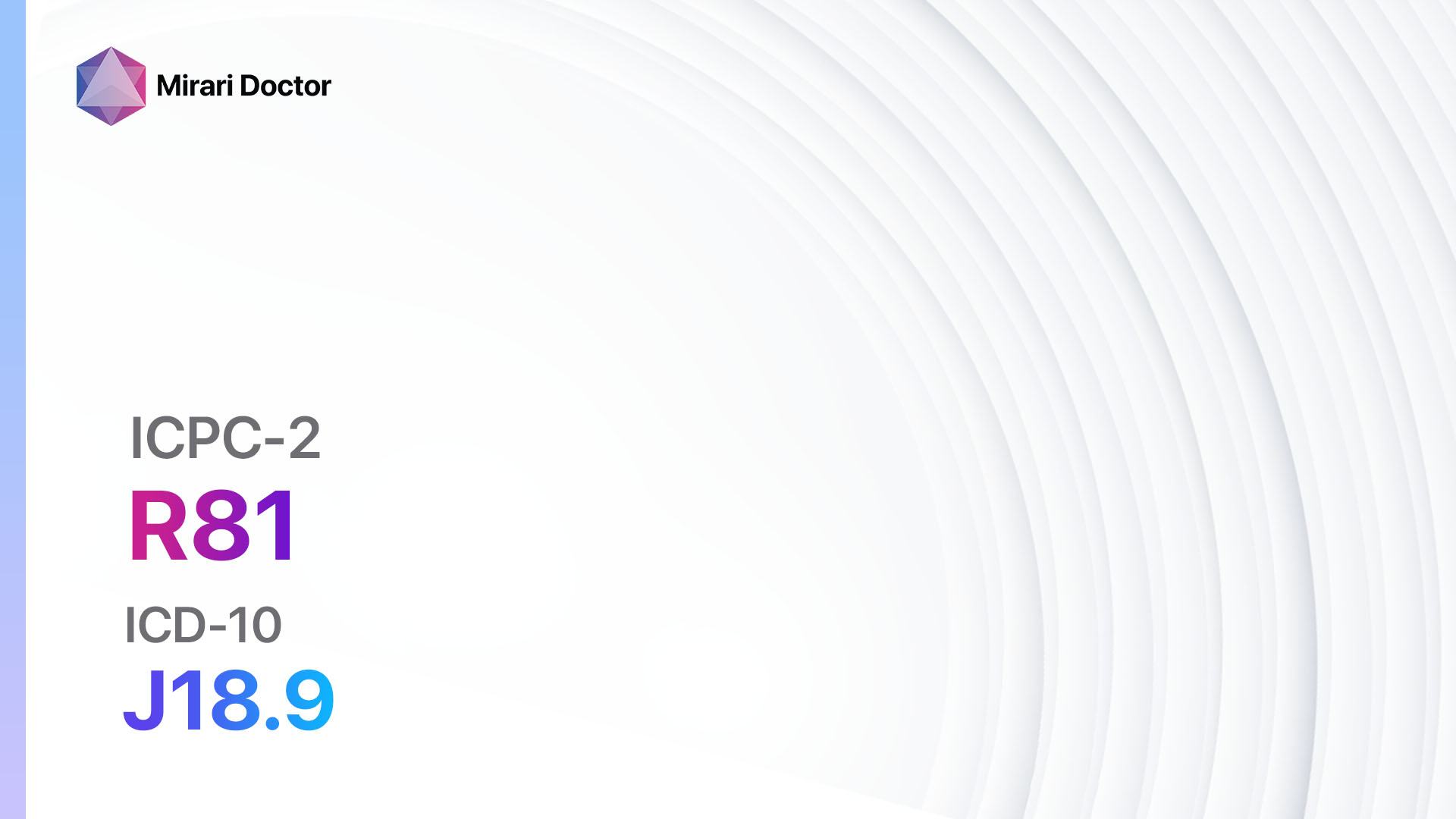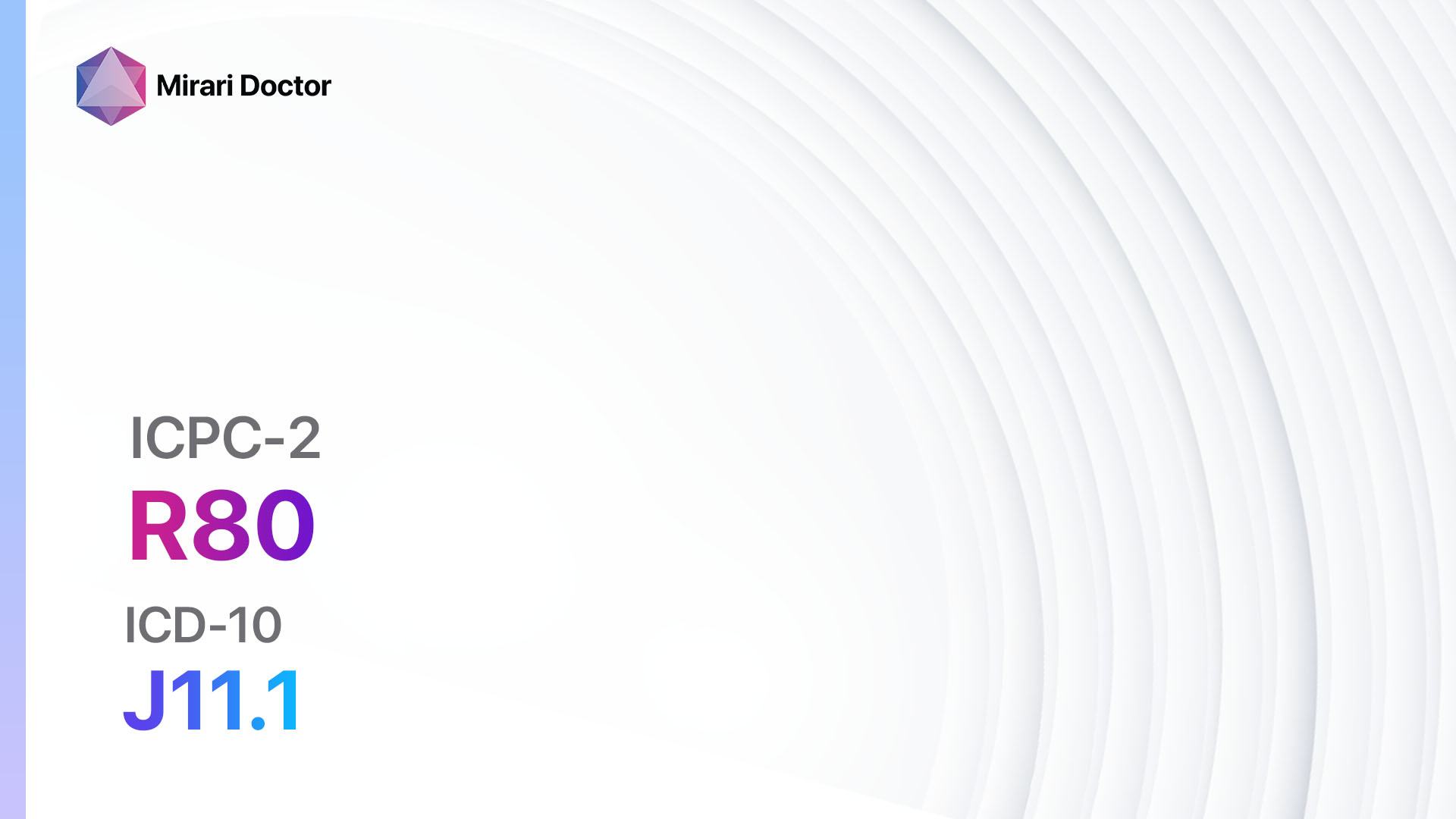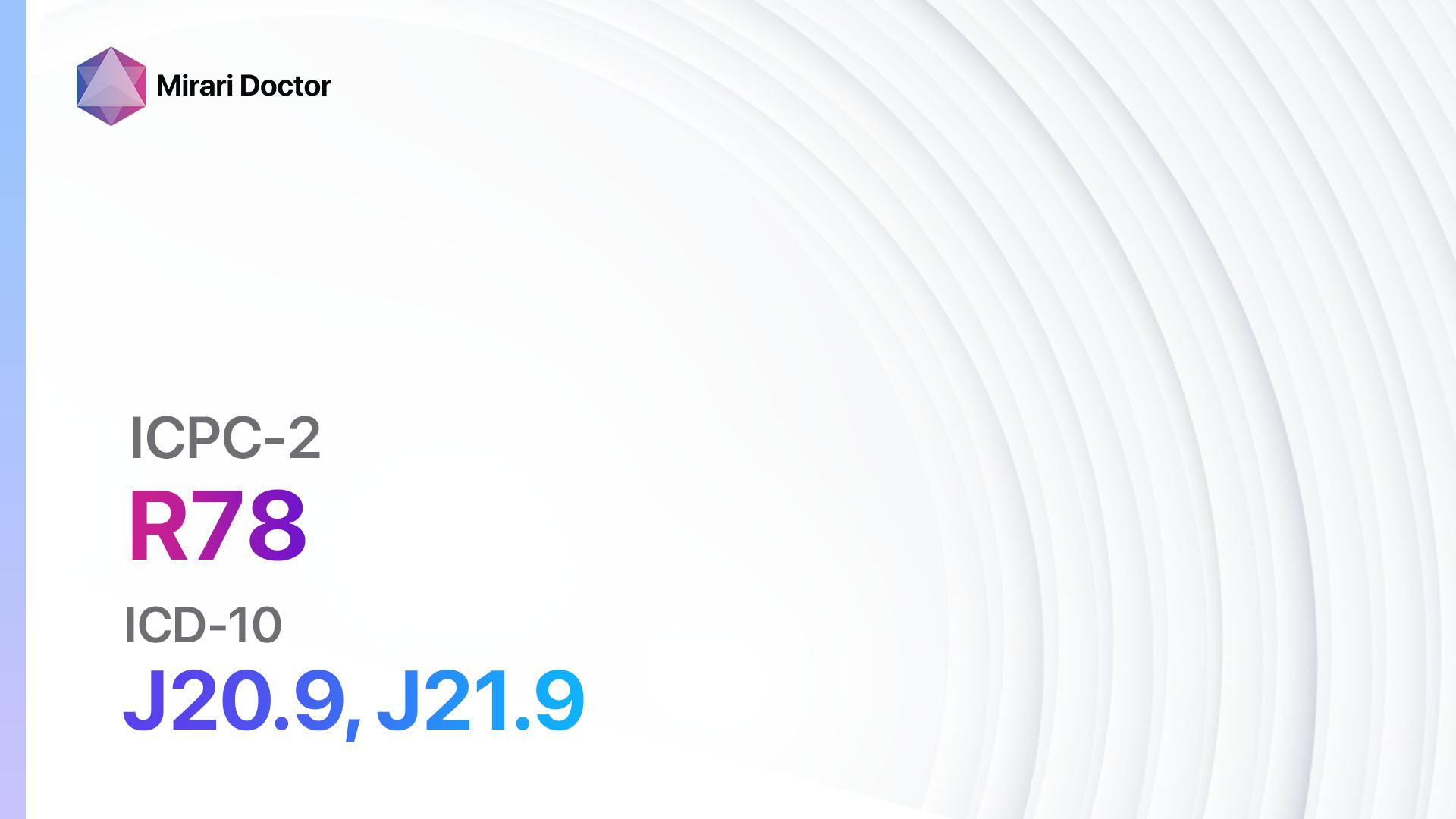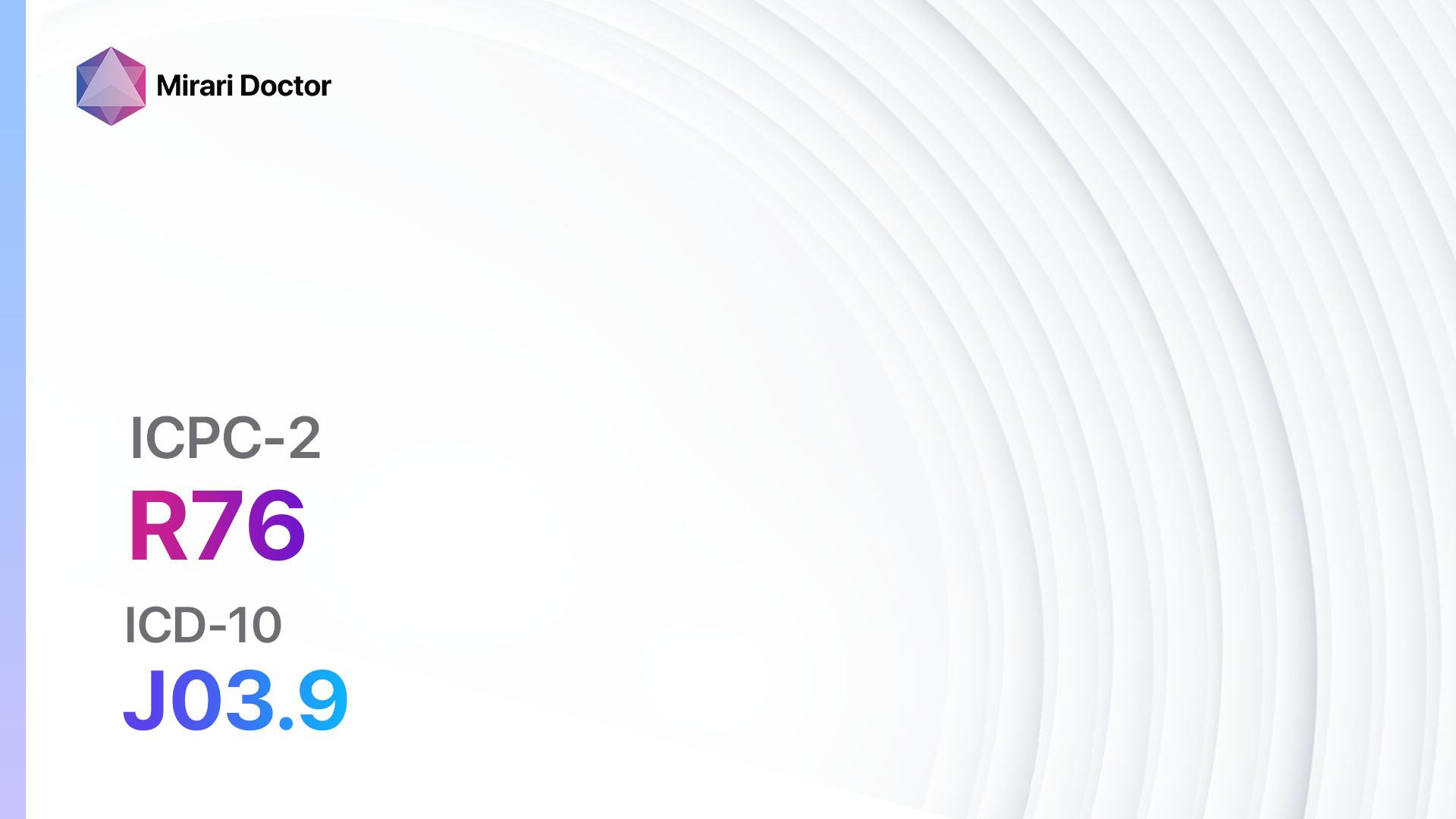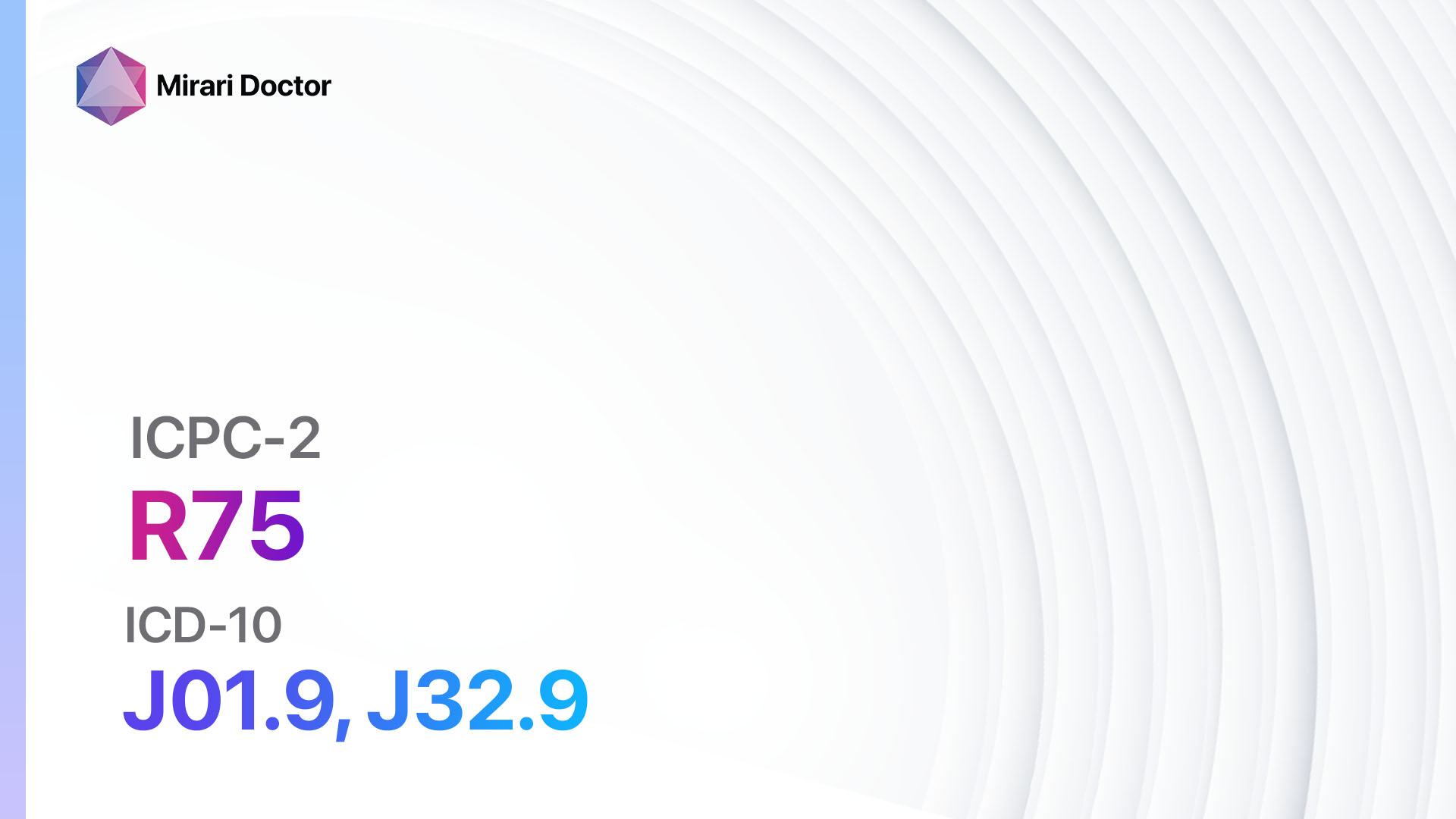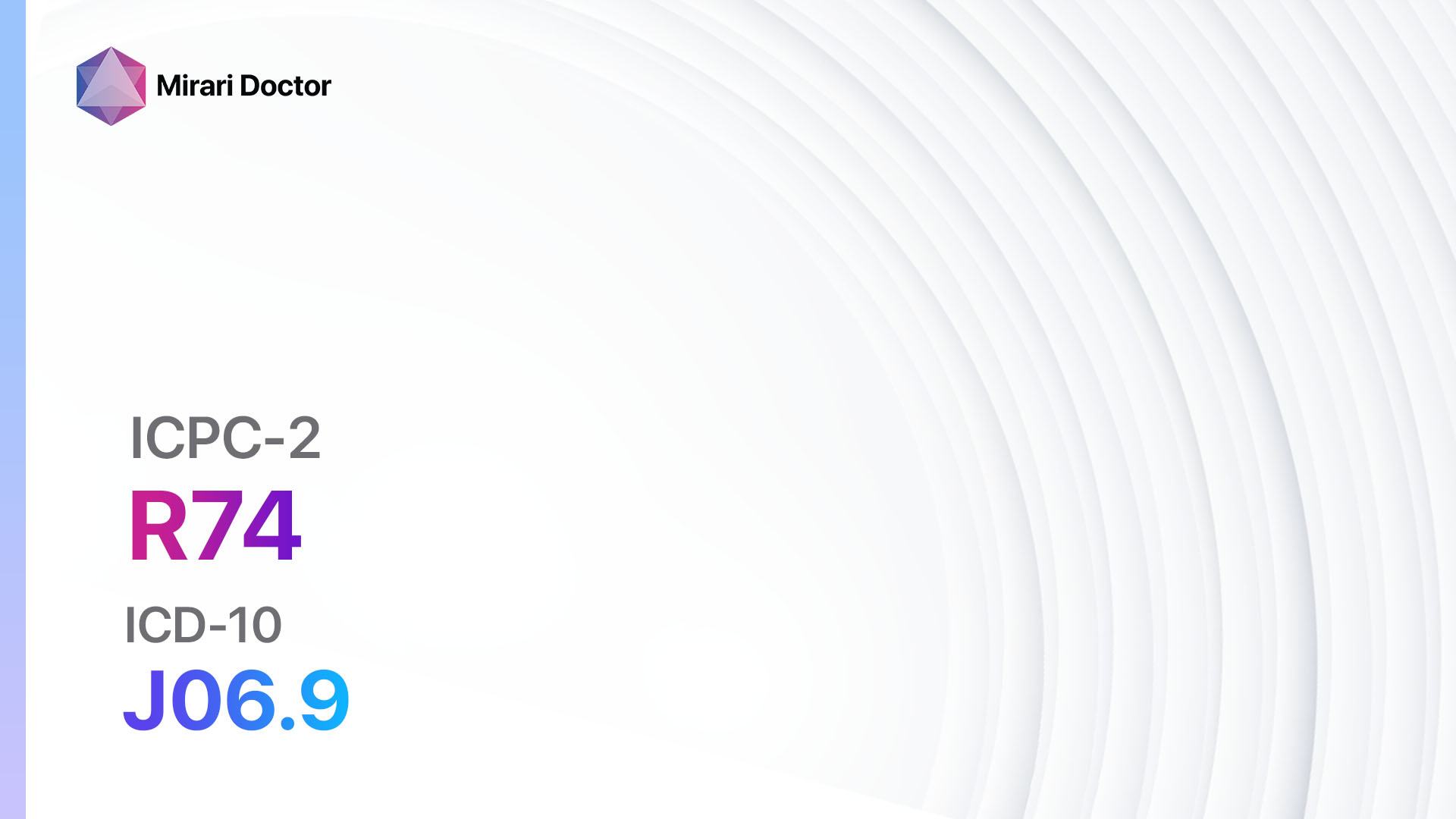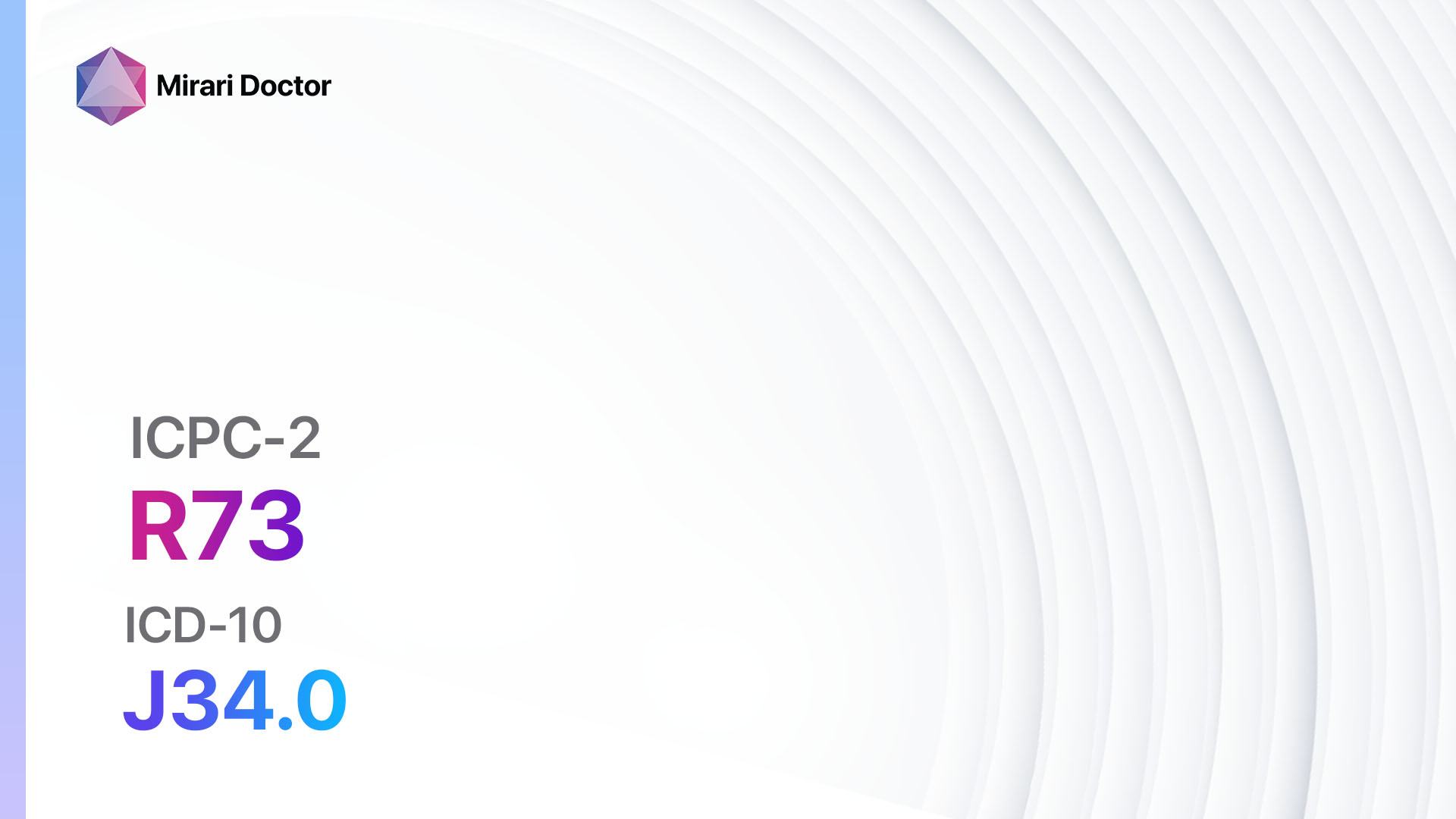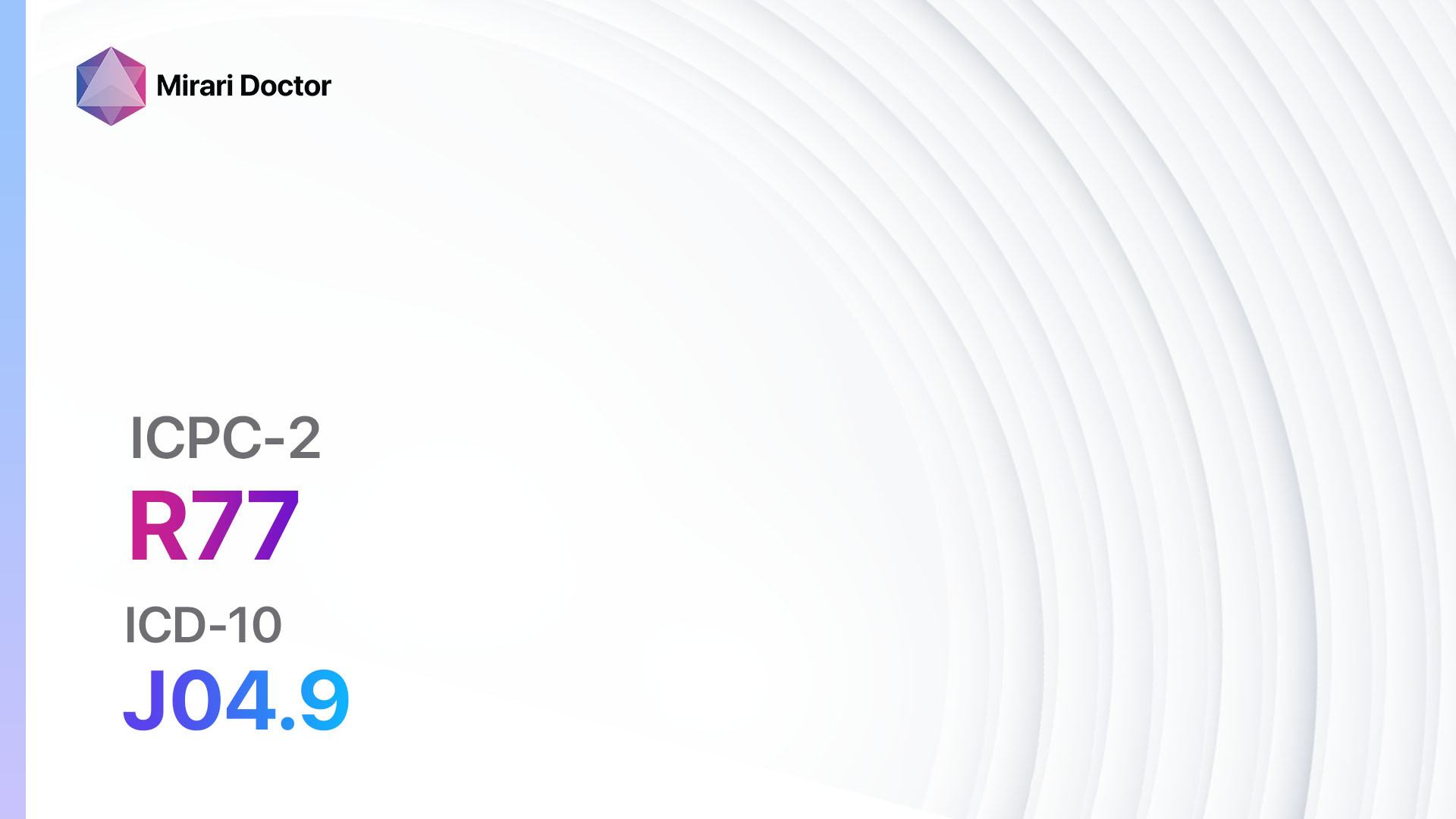
Introduction
Laryngitis/tracheitis acute is a condition characterized by inflammation of the larynx and trachea, leading to symptoms such as hoarseness, cough, and difficulty breathing. The aim of this guide is to provide healthcare professionals with a comprehensive overview of the diagnosis and management of acute laryngitis/tracheitis.
Codes
- ICPC-2 Code: R77 Laryngitis/tracheitis acute[1]
- ICD-10 Code: J04.9 Acute laryngitis and tracheitis, unspecified[2]
Symptoms
- Hoarseness: Patients may experience a change in their voice, with it becoming raspy or weak.[3]
- Cough: A dry or productive cough may be present.
- Difficulty breathing: Patients may feel shortness of breath or have difficulty breathing deeply.
- Sore throat: The throat may feel scratchy or irritated.
- Fever: Some patients may have a low-grade fever.[4]
Causes
- Viral infection: Acute laryngitis/tracheitis is commonly caused by viral infections, such as the common cold or influenza.[5]
- Bacterial infection: In some cases, a bacterial infection may be the cause of the inflammation.
- Irritants: Exposure to irritants, such as smoke or chemical fumes, can also lead to acute laryngitis/tracheitis.[6]
Diagnostic Steps
Medical History
- Gather information about the patient’s symptoms, including the duration and severity.
- Ask about any recent viral or bacterial infections.
- Inquire about exposure to irritants or any recent changes in the patient’s environment.[7]
Physical Examination
- Inspect the throat and larynx for signs of inflammation, redness, or swelling.
- Listen to the patient’s voice for hoarseness or changes in vocal quality.
- Auscultate the lungs for any abnormal breath sounds.[8]
Laboratory Tests
- Complete blood count (CBC): To assess for signs of infection, such as an elevated white blood cell count.
- Viral or bacterial cultures: If an infection is suspected, cultures can help identify the specific pathogen.[9]
Diagnostic Imaging
- Chest X-ray: To rule out other respiratory conditions, such as pneumonia or bronchitis.
- Laryngoscopy: In some cases, a laryngoscopy may be performed to visualize the larynx and trachea for any abnormalities.[10]
Other Tests
- Pulmonary function tests: If the patient is experiencing significant difficulty breathing, pulmonary function tests may be conducted to assess lung function.
- Allergy testing: If allergies are suspected as a cause of the inflammation, allergy testing may be performed.
Follow-up and Patient Education
- Advise the patient to rest their voice and avoid talking or singing loudly.
- Encourage the patient to stay hydrated and drink plenty of fluids.
- Recommend over-the-counter pain relievers, such as acetaminophen or ibuprofen, to alleviate discomfort.
- Educate the patient about the importance of avoiding irritants, such as smoke or chemical fumes.
Possible Interventions
Traditional Interventions
Medications:
Top 5 drugs for acute laryngitis/tracheitis:
- Nonsteroidal anti-inflammatory drugs (NSAIDs) (e.g., ibuprofen, naproxen):
- Cost: Generic versions can be $3-$20/month.
- Contraindications: History of gastrointestinal bleeding, renal impairment.
- Side effects: Upset stomach, heartburn.
- Severe side effects: Gastrointestinal bleeding, kidney damage.
- Drug interactions: Anticoagulants, other NSAIDs.
- Warning: Long-term use may increase the risk of cardiovascular events.
- Cough suppressants (e.g., dextromethorphan):
- Cost: Generic versions can be $5-$15/month.
- Contraindications: Chronic cough, asthma.
- Side effects: Drowsiness, dizziness.
- Severe side effects: Respiratory depression (rare).
- Drug interactions: Monoamine oxidase inhibitors (MAOIs), certain antidepressants.
- Warning: Avoid use in children under 4 years old.
- Antibiotics (e.g., amoxicillin, azithromycin):
- Cost: Generic versions can be $10-$30/month.
- Contraindications: Allergy to penicillin or macrolide antibiotics.
- Side effects: Upset stomach, diarrhea.
- Severe side effects: Severe allergic reactions, Clostridium difficile infection.
- Drug interactions: Warfarin, certain antacids.
- Warning: Antibiotics should only be prescribed if a bacterial infection is suspected.
- Oral corticosteroids (e.g., prednisone):
- Cost: Generic versions can be $10-$30/month.
- Contraindications: Active infections, uncontrolled diabetes.
- Side effects: Increased appetite, weight gain.
- Severe side effects: Adrenal suppression, osteoporosis.
- Drug interactions: Nonsteroidal anti-inflammatory drugs (NSAIDs), certain anticoagulants.
- Warning: Long-term use may require gradual tapering to avoid adrenal insufficiency.
- Antihistamines (e.g., cetirizine, loratadine):
- Cost: Generic versions can be $5-$20/month.
- Contraindications: Glaucoma, urinary retention.
- Side effects: Drowsiness, dry mouth.
- Severe side effects: Severe allergic reactions (rare).
- Drug interactions: Sedatives, certain antidepressants.
- Warning: Avoid driving or operating machinery while taking sedating antihistamines.
Alternative Drugs:
- Herbal remedies: Some herbal remedies, such as licorice root or slippery elm, may help soothe the throat. Cost: Varies depending on the specific product.
- Throat lozenges: Menthol or eucalyptus lozenges can provide temporary relief of throat discomfort. Cost: $5-$10 per package.
- Steam inhalation: Inhaling steam from a bowl of hot water or using a humidifier can help alleviate congestion. Cost: Varies depending on the method used.
- Throat sprays: Over-the-counter throat sprays containing numbing agents can provide temporary relief of throat pain. Cost: $5-$15 per bottle.
- Saline nasal sprays: Saline nasal sprays can help relieve nasal congestion and post-nasal drip. Cost: $5-$10 per bottle.
Surgical Procedures:
In general, surgical intervention is not necessary for acute laryngitis/tracheitis. However, in rare cases where there is a severe obstruction or abscess formation, surgical drainage or removal may be required. The cost of surgical procedures can vary significantly depending on the specific case and healthcare provider.
Alternative Interventions
- Acupuncture: May help reduce inflammation and improve overall well-being. Cost: $60-$120 per session.
- Herbal remedies: Certain herbs, such as marshmallow root or licorice, may have anti-inflammatory properties. Cost: Varies depending on the specific product.
- Saltwater gargles: Gargling with warm saltwater can help soothe the throat and reduce inflammation. Cost: Minimal.
- Steam inhalation: Inhaling steam from a bowl of hot water or using a humidifier can help alleviate congestion. Cost: Varies depending on the method used.
- Rest and hydration: Adequate rest and hydration are essential for the body’s natural healing process. Cost: Minimal.
Lifestyle Interventions
- Voice rest: Avoid talking or singing loudly to allow the vocal cords to heal. Cost: Minimal.
- Hydration: Drink plenty of fluids to keep the throat moist and prevent dehydration. Cost: Minimal.
- Avoid irritants: Stay away from smoke, chemical fumes, and other irritants that can worsen symptoms. Cost: Minimal.
- Humidification: Use a humidifier or take steamy showers to add moisture to the air and soothe the throat. Cost: Varies depending on the method used.
- Avoid throat clearing: Throat clearing can further irritate the vocal cords, so it is best to avoid it. Cost: Minimal.
It is important to note that the cost ranges provided are approximate and may vary depending on the location and availability of the interventions.
Mirari Cold Plasma Alternative Intervention
Understanding Mirari Cold Plasma
- Safe and Non-Invasive Treatment: Mirari Cold Plasma is a safe and non-invasive treatment option for various skin conditions. It does not require incisions, minimizing the risk of scarring, bleeding, or tissue damage.
- Efficient Extraction of Foreign Bodies: Mirari Cold Plasma facilitates the removal of foreign bodies from the skin by degrading and dissociating organic matter, allowing easier access and extraction.
- Pain Reduction and Comfort: Mirari Cold Plasma has a local analgesic effect, providing pain relief during the treatment, making it more comfortable for the patient.
- Reduced Risk of Infection: Mirari Cold Plasma has antimicrobial properties, effectively killing bacteria and reducing the risk of infection.
- Accelerated Healing and Minimal Scarring: Mirari Cold Plasma stimulates wound healing and tissue regeneration, reducing healing time and minimizing the formation of scars.
Mirari Cold Plasma Prescription
Video instructions for using Mirari Cold Plasma Device – R77 Laryngitis/tracheitis acute (ICD-10:J04.9)
| Mild | Moderate | Severe |
| Mode setting: 1 (Infection) Location: 6 (Throat, Lymphatic & Thyroid) Morning: 15 minutes, Evening: 15 minutes |
Mode setting: 1 (Infection) Location: 6 (Throat, Lymphatic & Thyroid) Morning: 30 minutes, Lunch: 30 minutes, Evening: 30 minutes |
Mode setting: 1 (Infection) Location: 6 (Throat, Lymphatic & Thyroid) Morning: 30 minutes, Lunch: 30 minutes, Evening: 30 minutes |
| Mode setting: 2 (Wound Healing) Location: 6 (Throat, Lymphatic & Thyroid) Morning: 15 minutes, Evening: 15 minutes |
Mode setting: 2 (Wound Healing) Location: 6 (Throat, Lymphatic & Thyroid) Morning: 30 minutes, Lunch: 30 minutes, Evening: 30 minutes |
Mode setting: 2 (Wound Healing) Location: 6 (Throat, Lymphatic & Thyroid) Morning: 30 minutes, Lunch: 30 minutes, Evening: 30 minutes |
| Mode setting: 2 (Wound Healing) Location: 5 (Lungs) Morning: 15 minutes, Evening: 15 minutes |
Mode setting: 2 (Wound Healing) Location: 5 (Lungs) Morning: 30 minutes, Lunch: 30 minutes, Evening: 30 minutes |
Mode setting: 2 (Wound Healing) Location: 5 (Lungs) Morning: 30 minutes, Lunch: 30 minutes, Evening: 30 minutes |
| Total Morning: 45 minutes approx. $7.50 USD, Evening: 45 minutes approx. $7.50 USD |
Total Morning: 90 minutes approx. $15 USD, Lunch: 90 minutes approx. $15 USD, Evening: 90 minutes approx. $15 USD |
Total Morning: 90 minutes approx. $15 USD, Lunch: 90 minutes approx. $15 USD, Evening: 90 minutes approx. $15 USD |
| Usual treatment for 7-60 days approx. $105 USD – $900 USD | Usual treatment for 6-8 weeks approx. $1,890 USD – $2,520 USD |
Usual treatment for 3-6 months approx. $4,050 USD – $8,100 USD
|
 |
|
Use the Mirari Cold Plasma device to treat Laryngitis/tracheitis acute effectively.
WARNING: MIRARI COLD PLASMA IS DESIGNED FOR THE HUMAN BODY WITHOUT ANY ARTIFICIAL OR THIRD PARTY PRODUCTS. USE OF OTHER PRODUCTS IN COMBINATION WITH MIRARI COLD PLASMA MAY CAUSE UNPREDICTABLE EFFECTS, HARM OR INJURY. PLEASE CONSULT A MEDICAL PROFESSIONAL BEFORE COMBINING ANY OTHER PRODUCTS WITH USE OF MIRARI.
Step 1: Cleanse the Skin
- Start by cleaning the affected area of the skin with a gentle cleanser or mild soap and water. Gently pat the area dry with a clean towel.
Step 2: Prepare the Mirari Cold Plasma device
- Ensure that the Mirari Cold Plasma device is fully charged or has fresh batteries as per the manufacturer’s instructions. Make sure the device is clean and in good working condition.
- Switch on the Mirari device using the power button or by following the specific instructions provided with the device.
- Some Mirari devices may have adjustable settings for intensity or treatment duration. Follow the manufacturer’s instructions to select the appropriate settings based on your needs and the recommended guidelines.
Step 3: Apply the Device
- Place the Mirari device in direct contact with the affected area of the skin. Gently glide or hold the device over the skin surface, ensuring even coverage of the area experiencing.
- Slowly move the Mirari device in a circular motion or follow a specific pattern as indicated in the user manual. This helps ensure thorough treatment coverage.
Step 4: Monitor and Assess:
- Keep track of your progress and evaluate the effectiveness of the Mirari device in managing your Laryngitis/tracheitis acute. If you have any concerns or notice any adverse reactions, consult with your health care professional.
Note
This guide is for informational purposes only and should not replace the advice of a medical professional. Always consult with your healthcare provider or a qualified medical professional for personal advice, diagnosis, or treatment. Do not solely rely on the information presented here for decisions about your health. Use of this information is at your own risk. The authors of this guide, nor any associated entities or platforms, are not responsible for any potential adverse effects or outcomes based on the content.
Mirari Cold Plasma System Disclaimer
- Purpose: The Mirari Cold Plasma System is a Class 2 medical device designed for use by trained healthcare professionals. It is registered for use in Thailand and Vietnam. It is not intended for use outside of these locations.
- Informational Use: The content and information provided with the device are for educational and informational purposes only. They are not a substitute for professional medical advice or care.
- Variable Outcomes: While the device is approved for specific uses, individual outcomes can differ. We do not assert or guarantee specific medical outcomes.
- Consultation: Prior to utilizing the device or making decisions based on its content, it is essential to consult with a Certified Mirari Tele-Therapist and your medical healthcare provider regarding specific protocols.
- Liability: By using this device, users are acknowledging and accepting all potential risks. Neither the manufacturer nor the distributor will be held accountable for any adverse reactions, injuries, or damages stemming from its use.
- Geographical Availability: This device has received approval for designated purposes by the Thai and Vietnam FDA. As of now, outside of Thailand and Vietnam, the Mirari Cold Plasma System is not available for purchase or use.
References
- ICPC-2 Code R77. International Classification of Primary Care, 2nd edition. World Organization of Family Doctors (WONCA).
- ICD-10-CM Code J04.9. International Classification of Diseases, 10th Revision, Clinical Modification. World Health Organization.
- Reveiz L, Cardona AF. Antibiotics for acute laryngitis in adults. Cochrane Database Syst Rev. 2015;(5):CD004783.
- Syed I, Daniels E, Bleach NR. Acute laryngitis in adults. BMJ. 2016;354:i5768.
- Dominguez LM, Simpson CB. Viral laryngitis: a mimic and a monster – range, presentation, management. Curr Opin Otolaryngol Head Neck Surg. 2015;23(6):454-458.
- Dworkin JP. Laryngitis: types, causes, and treatments. Otolaryngol Clin North Am. 2008;41(2):419-436.
- Merati AL, Rieder AA. Normal endoscopic anatomy of the pharynx and larynx. Am J Med. 2003;115 Suppl 3A:10S-14S.
- Rosen CA, Murry T. Diagnostic laryngeal endoscopy. Otolaryngol Clin North Am. 2000;33(4):751-757.
- Bisno AL. Acute pharyngitis. N Engl J Med. 2001;344(3):205-211.
- Sataloff RT, Hawkshaw MJ, Divi V, Heman-Ackah YD. Physical examination of voice professionals. Otolaryngol Clin North Am. 2007;40(5):953-969.
- Benninger MS, Murry T. The Singer’s Voice. San Diego: Plural Publishing; 2008.
Related articles
Made in USA


